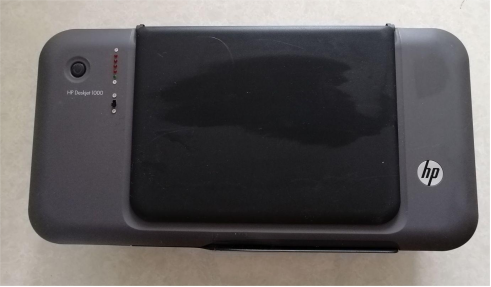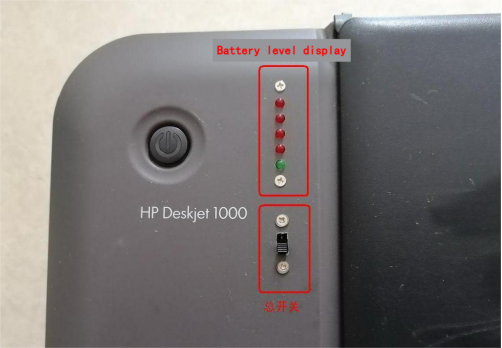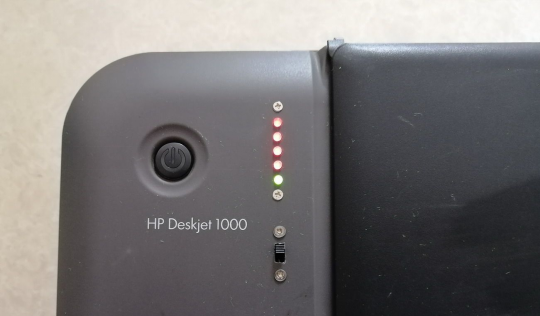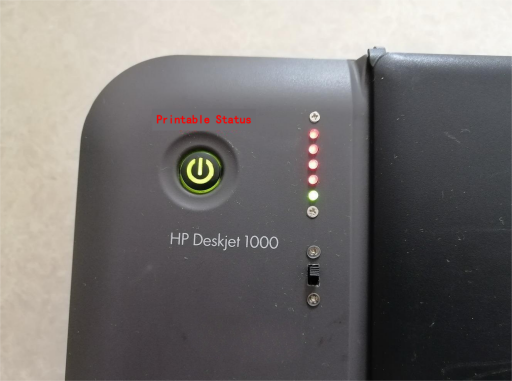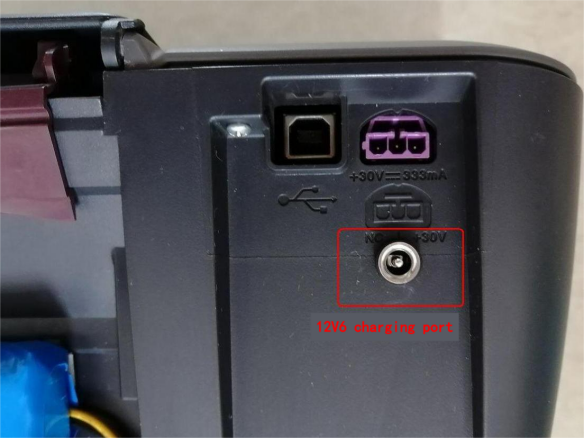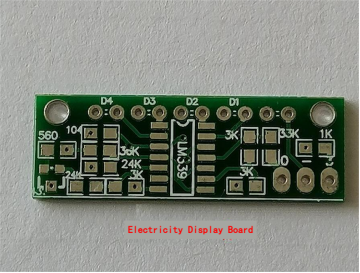
The HP1000 inkjet printer has been modified to include a rechargeable lithium battery pack and a DC-DC boost converter, transforming it into a mobile printer suitable for on-the-go printing needs.
I. Several reasons support the choice of the HP1000 for this modification:
1.Compact size:
· The HP1000 dimensions measure 420x211x122, making it one of the smallest A4 inkjet printers available, excluding specialized mobile printers.
2.Low power consumption:
· The HP1000's specifications indicate a power consumption of 10W while printing and 2.3W on standby. When powered by AC, the adapter's power at the 220V end is measured. Testing the adapter's DC 22V output reveals a standby current of approximately 34mA. Upon shutting down the printer, the current drops to 3mA, demonstrating significantly lower power consumption when powered by DC. This makes it highly suitable for battery operation.
3.Affordable price:
· The HP1000 is cost-effective, and its upgraded models such as the HP1112 are readily available. Additionally, models like HP1010 and 1111 share similar dimensions and power requirements, making the modification process consistent across these models.
4.Low printing costs:
· Printers from the HP10 and HP11 series can print using only black ink cartridges. For printing monochrome documents, installing a single black ink cartridge suffices. Compatible refillable ink cartridges further reduce printing costs to just a few cents per page. Although the Canon IP110 mobile printer boasts superior performance, its ink cartridges are expensive and equipped with counting chips. Once the ink is depleted, refilling becomes ineffective. While compatible ink cartridges are available at lower prices, the IP110's independent print head design makes it susceptible to nozzle blockages, potentially leading to costly print head replacements.
· The battery pack consists of Samsung 2600mAh 18650 lithium batteries arranged in a 2S3P configuration with a protective circuit board. Once packaged, the battery pack is affixed to the rear of the printer using 3M double-sided tape, as there is insufficient internal space for installation. The boost converter and battery level indicator are positioned appropriately within the printer. Post-modification, the printing performance shows no significant deviation from when powered by an AC adapter.
II. Operating procedure:
· The additional power switch installed during modification (referred to as the master switch) must be turned on first. At this point, the added battery level indicator LEDs should illuminate. There are a total of 5 LEDs - 1 green and 4 red. The green LED indicates the power status, while the 4 red LEDs represent the battery level. When all red LEDs are lit, the battery is sufficiently charged. As the battery drains, the number of lit red LEDs decreases, with the last LED indicating low battery and the need for recharging. Once the master switch is on, pressing the original power button turns on the printer. Upon activation, the green LED beneath the power button lights up, signaling readiness for printing. To power off, the printer's power button must be pressed first, followed by turning off the master switch.
III. Charging:
· The charging port is located beneath the original adapter socket and is a DC5.5-2.1 port, with outer negative and inner positive terminals. As the battery pack is configured in 3S, no additional charging circuitry is installed. Therefore, a 12.6V three-series lithium battery charger with current limiting capabilities is required for charging. External chargers typically feature status indicator lights, with a red light indicating charging in progress, which switches to green upon full charge.
Most inkjet printer motherboards operate on DC power, with some HP models featuring dual DC power supplies while others have a single supply. Some printers utilize external AC adapters, while others integrate the power adapter box within the printer. Consequently, in theory, nearly all inkjet printers can be converted to battery power, eliminating the need for inverters for power conversion.
